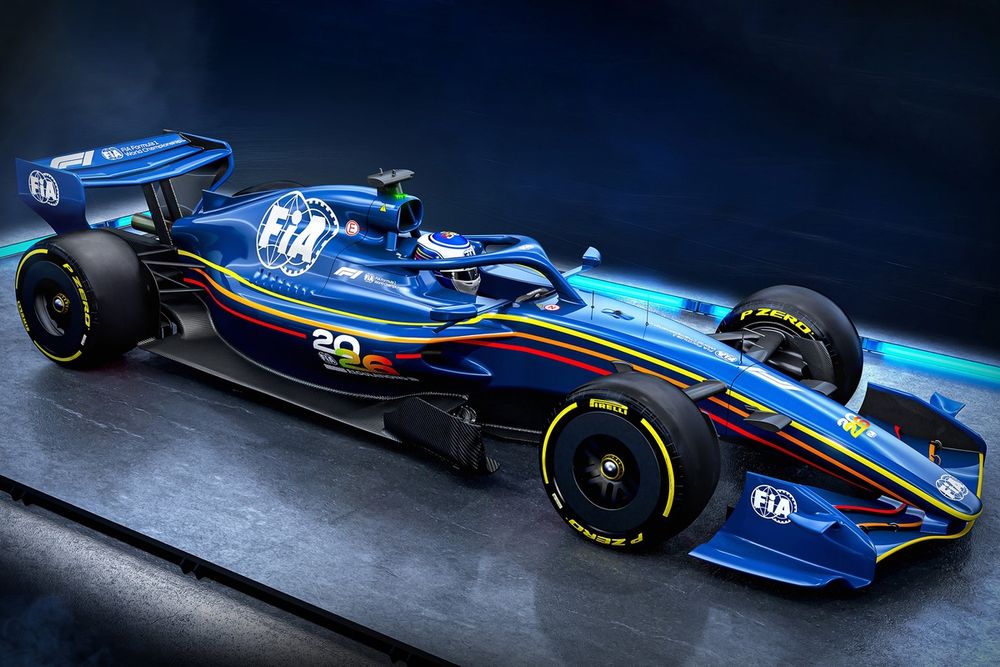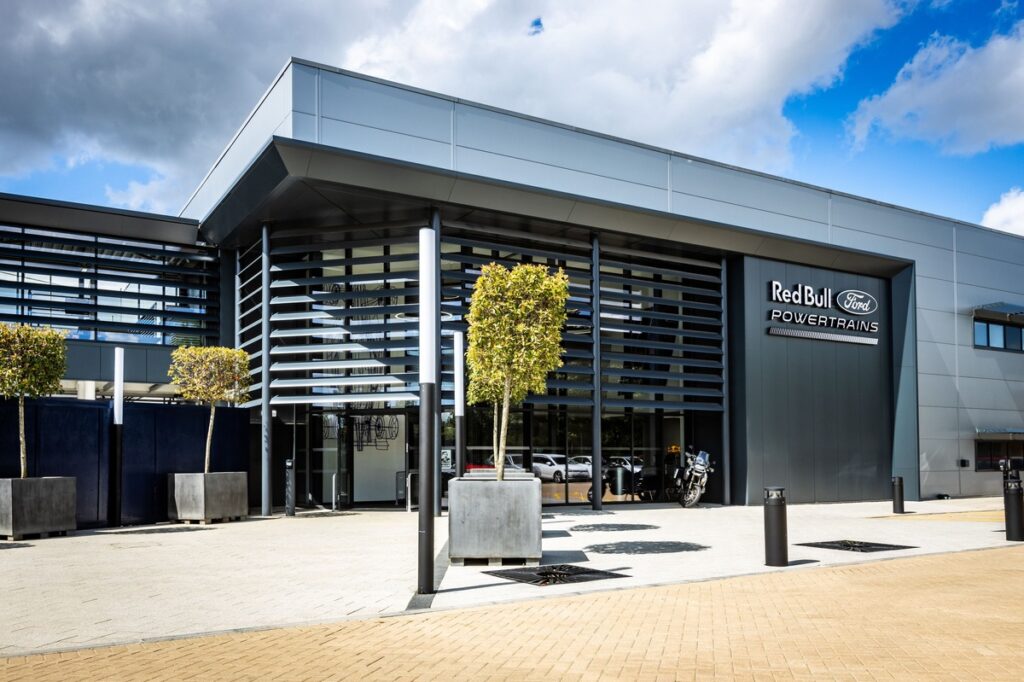Although only a third of the 2025 Formula 1 season has passed, a lot of focus behind the scenes is already on next year – when both new engine and chassis regulations come into play.
It represents a major shift for all teams and manufacturers, but arguably even more for Red Bull. Christian Horner’s team can no longer rely on Honda power units and will take control of its own destiny with Red Bull Powertrains-Ford.
Mark Rushbrook, Global Director of Ford Performance, previously told Autosport that most of the key milestones for the 2026 engine are being met, although he called it “impossible” to hit every target at once.
Are concerns about the 2026 F1 regulations justified?
In addition to general competitiveness, two major question marks in the paddock – or perhaps even concerns – remain: Will the overhaul in regulations lead to bigger performance gaps between the teams or even long-term dominance? And secondly, can the 2026 rules with active aerodynamics and an increase in electric power still produce entertaining racing?
Regarding the first question, there have been extensive discussions in recent months – including the engine summit in Bahrain – about concessions for manufacturers who fall behind. The aim is to avoid long-term dominance like Mercedes enjoyed starting in 2014.
“I think anytime there are new rules, especially with the power unit and the chassis together, there is, I don’t want to say a fear, but there’s a known risk for the sport that people can come in at different levels. We’ve got to see how it balances out after that. The most important thing is how we react as a sport,” Rushbrook told Autosport.
Jim Farley, CEO of Ford, Mark Rushbrook, Ford and Red Bull Racing Team Principal Christian Horner
Photo by: Red Bull Content Pool
The conversations behind the scenes are not about tokens, but instead about extra dyno hours and additional budget cap allowances for engine development. But the question remains how quickly these measures can have an effect on-track if one manufacturer clearly pulls ahead.
“Well, that remains to be seen,” Rushbrook added. “But it’s certainly part of the discussions we’re having right now, and I’m happy with how those talks are going so far.”
What kind of racing will the 2026 F1 rules produce?
As for the second concern – what kind of racing the 2026 rules produce – Horner suggested during the Bahrain Grand Prix in April that the energy deployment should be adjusted for certain races.
It wouldn’t change the hardware of the new engines but could help prevent excessive lift-and-coast, which he sees as a worst-case scenario for both fans and drivers.
“That’s also part of the current process with all manufacturers. Everyone has their own simulations, but we need to ask ourselves: What does this mean for the racing and for the show we provide to fans?,” Rushbrook said.
“For the sport to be successful, we’ve got to work together to make sure that the show is still a good show. The teams are here to win, but we also need to put on a good race.”

2026 Formula 1 rules
Photo by: FIA
Asked whether he fears the 2026 rules could be as problematic as some in the paddock fear, Rushbrook replied: “I don’t know if I see it as a fear. I see it as something that we need to watch and react to accordingly.”
Scrapping the 2026 regulations is fully off the table, although eyebrows were raised when the FIA even suggested it as an option during the Chinese Grand Prix weekend.
“It was quite late for something like that to come up,” Rushbrook said. “But it’s good that after that everyone came together – manufacturers, teams, the FIA, and F1” – referring to the top-level meeting in Bahrain.
“Everyone agreed that 2026 is very important, so now we just have to deliver together.”
What should the F1 engine of the future look like?
It means a return to V10 or even V8 engines is no longer an option short-term, although the question remains: what should the F1 engine of the future look like from 2031 onwards, when the next cycle begins?
A V10 or V8 running on sustainable fuel is widely discussed, although the FIA stated after the Bahrain meeting that future engines will always include an electric component. It’s crucial for Audi and Honda – and Ford makes clear that it needs a certain level of electrification as well.
Red Bull Ford Powertrains
Photo by: Red Bull Content Pool
When asked if it’s an important element for Ford to stay involved in F1 long-term, Rushbrook responded: “Yes. For Ford Motor Company, we believe there should be some form of electrification in there.
“That’s part of what attracted us to the 2026 rules. It’s all about that balance between the ICE (Internal Combustion Engine) and electrification. Does it need to be 50-50? No, not necessarily.
“As long as we have the opportunity to contribute, to learn and to bring knowledge to our road cars, then that’s ideally what we’re looking for.”
As for what that future engine formula should look like – a V10 or V8 with KERS – Rushbrook finds it too early to tell.
“There’s been a lot of discussion, but it’s too simplistic to just say V10 or V8,” he added. “There are so many ways to implement something like that. You really have to get into the details to see whether something can work or not.
“There may be a sort of framework, but whether it aligns with what Ford Motor Company wants, I can’t answer until I know all the details.”
Max Verstappen, Red Bull Racing
Photo by: Steven Tee / LAT Images via Getty Images
The complexity lies in many variables: not just a V10 or V8 or how much electric power it includes, but also whether the engine should be turbocharged.
“Exactly,” he said. “But we’re talking really long-term here. There are already some aspects that we all agree on, but also some areas where opinions still differ.”
Ford’s commitment to Red Bull currently runs through the next cycle of regulations starting in 2026. What happens beyond 2031 depends on how the regulations evolve and where F1 is heading.
“Of course, but that’s true for every form of motorsport that we take part in,” Rushbrook said.
“Ultimately the health of the sport, the other manufacturers that are participating, the technical regulations and the ability to have some form of tech transfer are all important to us.”
That said, the massive investments in Milton Keynes suggest that Ford isn’t in it for the short term, as these are long-term projects.
“That is definitely our intent,” Rushbrook confirmed. “We’re committed to working with all the other stakeholders for what is the right thing for the future of this sport.
“Is it going to be exactly what any single manufacturer wants? No. But that’s part of the process, because at the end of the day, if that discussion is exactly what we want and every other manufacturer leaves, then it’s not a healthy sport either.
“We know that and the other manufacturers know that as well. So you’ve got to work together for the good of the sport, the health of the sport and that basically means being partners off the track. You want to race each other fiercely on the track, but you need to work together off the track.”
In this article
Ronald Vording
Formula 1
Red Bull Racing
Be the first to know and subscribe for real-time news email updates on these topics
Subscribe to news alerts
Read the full article here

